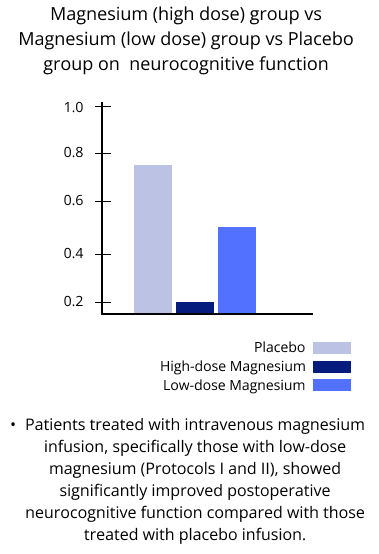
Intravenous Magnesium as a Possible Therapy for Cerebral Ischemia

Table Of Contents
Magnesium as a Potential Therapy for Cerebral Ischemia
Recent clinical studies support the use of intravenous magnesium as a possible therapy for cerebral ischemia, a condition that happens when there is not enough blood flow to the brain. It is also an attractive medication to reduce the damage caused by a stroke to the nervous system. It is widely available, inexpensive, and has a well-established safety profile.
What are Carotid Arteries?
Carotid arteries are the main blood vessels that supply blood and oxygen to the brain. If these vessels are blocked or narrowed due to hardened fatty deposits, then the brain would not get enough supply of nutrients to properly function, triggering a stroke that can be fatal.
Can Magnesium Aid in Neuropsychometric Testing Following CEA?
Carotid endarterectomy (CEA) is one treatment option for this grave condition. It offers a unique model setting to evaluate the protective effect of magnesium on the brain and nerves due to a high percentage of cases of neurocognitive decline occurring after the surgery. Such decline involved thinking, reasoning, memory, and problem-solving problems.
This study assessed whether magnesium therapy during and after CEA would improve neuropsychometric testing (NPT) to show how well a person’s brain worked. The abilities tested include reading, language usage, attention, learning, processing speed, reasoning, remembering, problem-solving, among others.
The Study on Intravenous Magnesium on Patients Undergoing Carotid Endarterectomy
92 patients undergoing CEA completed the study. They were randomly assigned to 4 groups: 43 received placebo (saline solution) infusion, 49 took one of three magnesium-dosing protocols. These protocols (Protocols I, II, and III) differed only in the loading dose.
A battery of five NPTs was performed before and a day after surgery for comparison. An assessment was also performed on a set of 35 patients concurrently undergoing lumbar laminectomy to serve as a control group for NPT to account for the effects of general anesthesia on NPT performance.
The Results
Patients treated with intravenous magnesium infusion, specifically those with low-dose magnesium (Protocols I and II), showed significantly improved postoperative neurocognitive function compared with those treated with placebo infusion.

The Conclusion
Low-dose intraoperative magnesium therapy protects against neurocognitive decline following CEA.
Reference
Related Posts



Quick Links
Legal Stuff




